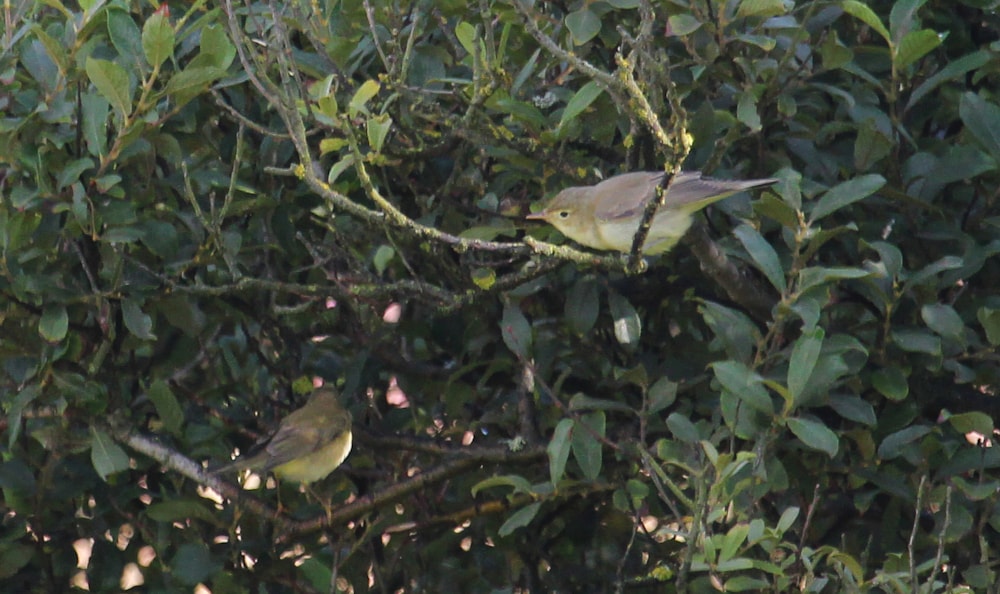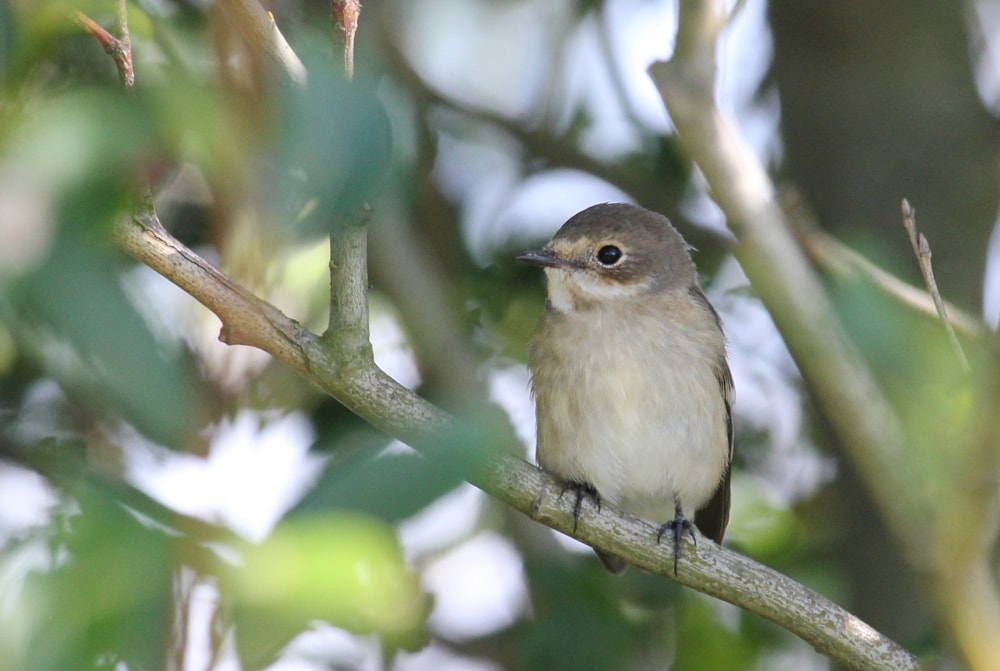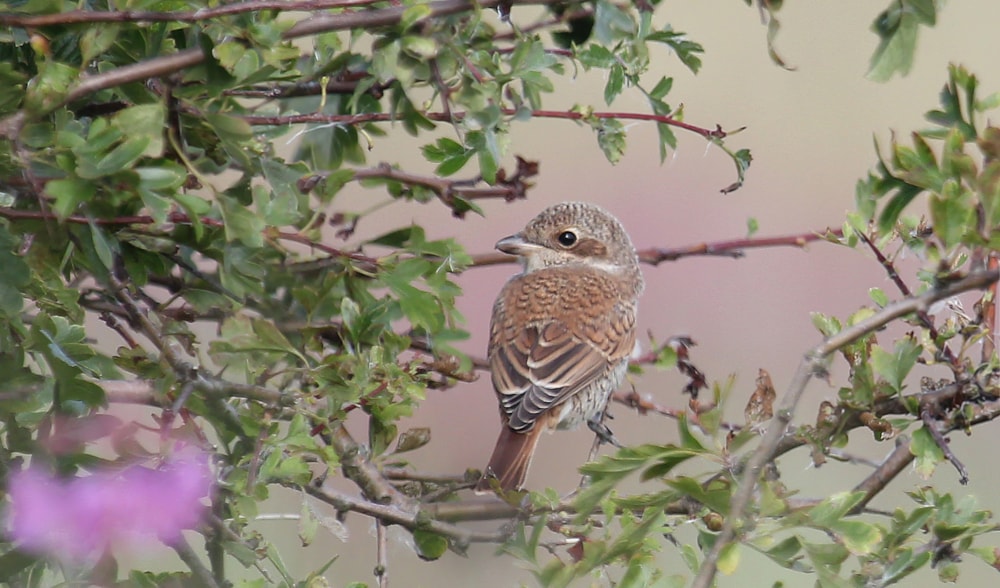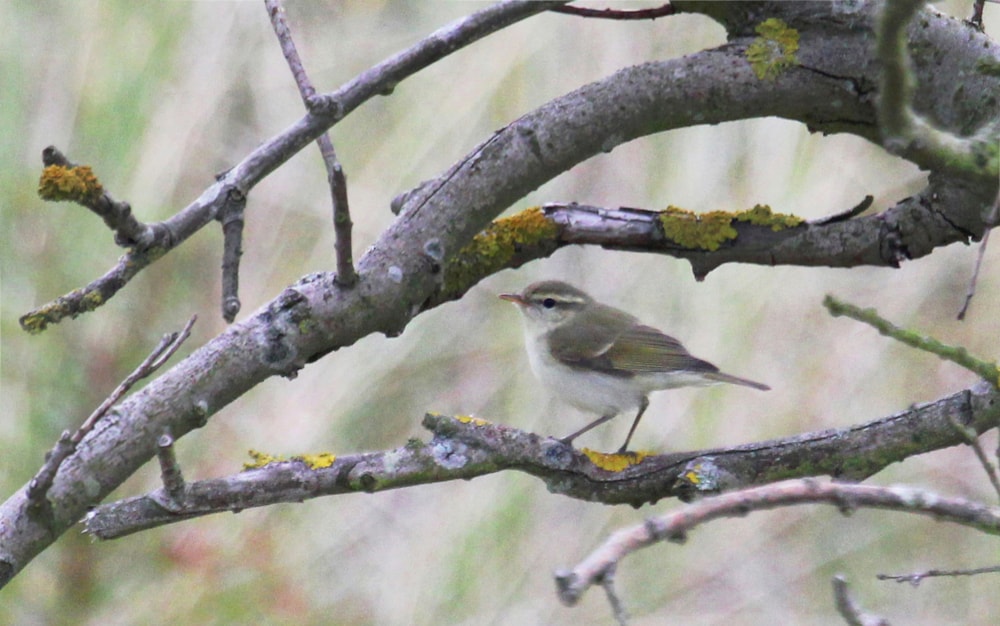Many of us have had days looking for migrants when the wind didn't quite come from the right direction, the rain arrived too late or too early, the weather on the continent wasn't ideal and, ultimately, there were no birds. Luckily though, there are days when everything combines to produce an excellent day's birding ...
The night of the 23-24 August 2015 looked promising. An easterly breeze and high pressure over the continent combined with overnight rain to promise good fall conditions. We headed north from home to Holy Island, further up the Northumberland coast, for what was actually our third visit in five days. The previous days had produced a couple of Wrynecks and a brief Icterine Warbler, but the numbers of common migrants felt low. Thankfully, 24 August did not disappoint!
We arrived just as the cloud and rain gave way to a hot, sunny morning. Chare Ends was the first part of the island we decided to search. The first bush we checked contained numerous Willow Warblers, several Garden Warblers and a stunning Wood Warbler – we knew we were in for a good day.
We continued from Chare Ends towards an area of dunes, known as the Excavations, on the north side of the island. Passing a large willow containing a good number of birds feeding in the warm sun, we quickly picked out an Icterine Warbler among the Willow and Garden Warblers. There were also a couple of Pied and Spotted Flycatchers in the same bush – our first of the morning. It would prove to be a particularly good day for Pied Fly and Garden Warbler on the island, with birds in pretty much every suitable patch of scrub.

This Icterine Warbler was the first proper scarce find of the day (Jonathan Farooqi).
Every bush felt like it had potential and, on reaching the Excavations, I noticed several Willow Warblers which looked as though they were mobbing something. Looking through my binoculars revealed the distinctive shape and cryptic patterning of a Wryneck. It's surprising how often we see Wrynecks being mobbed by small passerines ... it was also great to be able to watch a male Common Redstart nearby, this species' brilliant colours always a delight.
As we wandered back towards the village, we flushed another Wryneck from some dunes, and, after some searching, we were able to relocate it sitting deep in a hawthorn. This bird proved much more difficult than the first, so we continued making our way towards Holy Island village. We couldn't find any scarcities around the village – the large amount of leaves still on the trees at this time of the year made finding birds trickier, but were able to admire more of the selection of commoner migrants on the island.

There was quite a fall of Pied Flycatchers, with individuals found in most areas of scrub on the island (Jonathan Farooqi).
Given it was such a warm, sunny day during the school summer holidays, by lunchtime the number of tourists on the main part of the island were not for our liking, so we headed to the quieter west end of the island, known as The Snook. A juvenile Red-backed Shrike had been found here the day before and we soon relocated it, being mobbed by Whinchats in the dunes just west of Snook House. A smart bird, and with a bit of fieldcraft (and an inevitable coating of the non-native Pirri-pirri-burs) I got some fantastic views of it in a hawthorn. I never tire of watching shrikes as they are so full of character and this was (and still is) the only Red-backed Shrike I have seen on the island in autumn.

Careful fieldwork resulted in excellent views of this juvenile Red-backed Shrike (Jonathan Farooqi).
At Snook House I picked up another Icterine Warbler lurking in the canopy of a sycamore. Just east of the house is a small fenced plantation of trees and bushes and it contained yet more Garden Warblers, Pied and Spotted Flycatchers. I glimpsed the dark, speckled undertail of a skulking Barred Warbler, although it proved elusive. I was able to gain just a couple of brief views, but other birders later managed to see it well. We continued to search the hawthorns and willows around the Snook (missing a further Icterine Warbler and Wryneck), but couldn't find any more scarcities.
Next we headed back to the Snook House plantation to have another look for the Barred Warbler. Just as we arrived, a group of birders told us that they had found a Greenish Warbler at the Excavations, back on the main part of the island. This was the species which I had really been hoping to see, as my previous two encounters had been very brief with poor views. So, despite time now being somewhat limited, we rushed back towards the Excavations.
On arrival, it wasn't looking good. The only birds we could find were Willow Warblers and a single Eurasian Reed Warbler. Perhaps this wasn't going to be the day I finally had good views of a Greenish ... We had checked almost every bush, so decided to start heading back to the car, but a movement in the last willow stopped us in our tracks. A glimpse of a Phylloscopus with a thick supercilium. Silvery underparts. A wing-bar. Finally, out hopped the Greenish Warbler! It went on to give us some great views as it worked its way through the bushes – a perfect end to a spectacular day of birding on the Northumberland coast. As well as the Greenish, we had seen two Icterine Warblers, singles of Wood and Barred Warblers, two Wrynecks, Red-backed Shrike and an excellent minimum of 20 Pied Flycatchers and 20 Garden Warblers among the rest of the commoner migrants on the island.

Good views were eventually obtained of this Greenish Warbler (Jonathan Farooqi).
While there are undoubtedly quiet days, where traipsing around the sand dunes may produce little more than a few European Robins, this superb eleven hours in the field, with common migrants all over the place and the added bonus of some great scarcities, is exactly why I love birding Holy Island so much.

